Greece, officially the Hellenic Republic is a country in southeastern Europe with thousands of islands throughout the Aegean and Ionian seas. Influential in ancient times, it’s often called the cradle of Western civilisation. Athens, its capital, retains landmarks including the 5th-century B.C. Acropolis citadel with the Parthenon temple. Greece is also known for its beaches, from the black sands of Santorini and the party resorts of Mykonos.
From the eighth century BC, the Greeks were organised into various independent city-states, known as poleis, which spanned the Mediterranean and the Black Sea. Philip II of Macedon united most of present-day Greece in the fourth century BC, with his son Alexander the Great rapidly conquering much of the ancient world, from the eastern Mediterranean to India.
The subsequent Hellenistic period saw the height of Greek culture and influence in antiquity. Greece was annexed by Rome in the second century BC, becoming an integral part of the Roman Empire and its continuation, the Byzantine Empire, which was predominately culturally and linguistically Greek.
Places to visit in Greece
1. Santorini
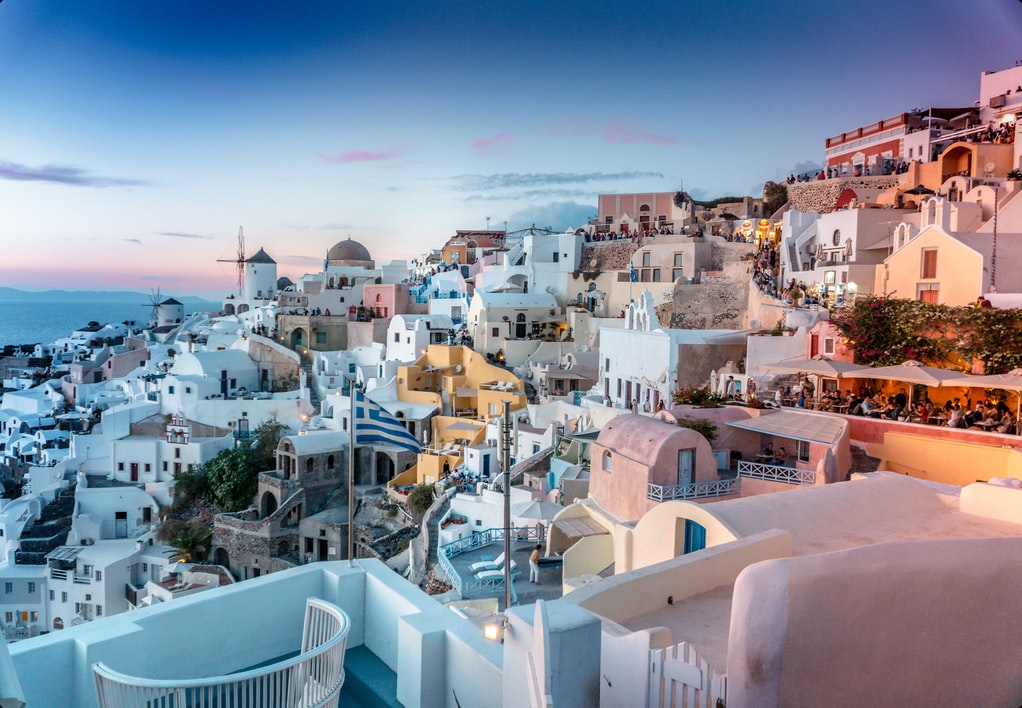
Santorini was named by the Latin Empire in the thirteenth century, and is a reference to Saint Irene, from the name of the old cathedral in the village of Perissa – the name Santorini is a contraction of the name Santa Irini. This is probably one of the most well-known places to visit in Greece. Santorini is the jewel of the Aegean. Thousands are drawn to the beauty of this island every year and leave knowing that there is nowhere else like it. This spectacularly beautiful place is one of the most scenic in all the Greek Islands. Picturesque and world-renowned, Santorini must be seen to be believed.
The island remains the home of a small, but flourishing, wine industry, based on the indigenous Assyrtiko grape variety, with auxiliary cultivations of Aegean white varieties such as Athiri and Aidani and the red varieties such as Mavrotragano and Mandilaria. The vines are extremely old and resistant to phylloxera (attributed by local winemakers to the well-drained volcanic soil and its chemistry), so the vines needed no replacement during the great phylloxera epidemic of the late 19th century. In their adaptation to their habitat, such vines are planted far apart, as their principal source of moisture is dew, and they often are trained in the shape of low-spiralling baskets, with the grapes hanging inside to protect them from the winds.
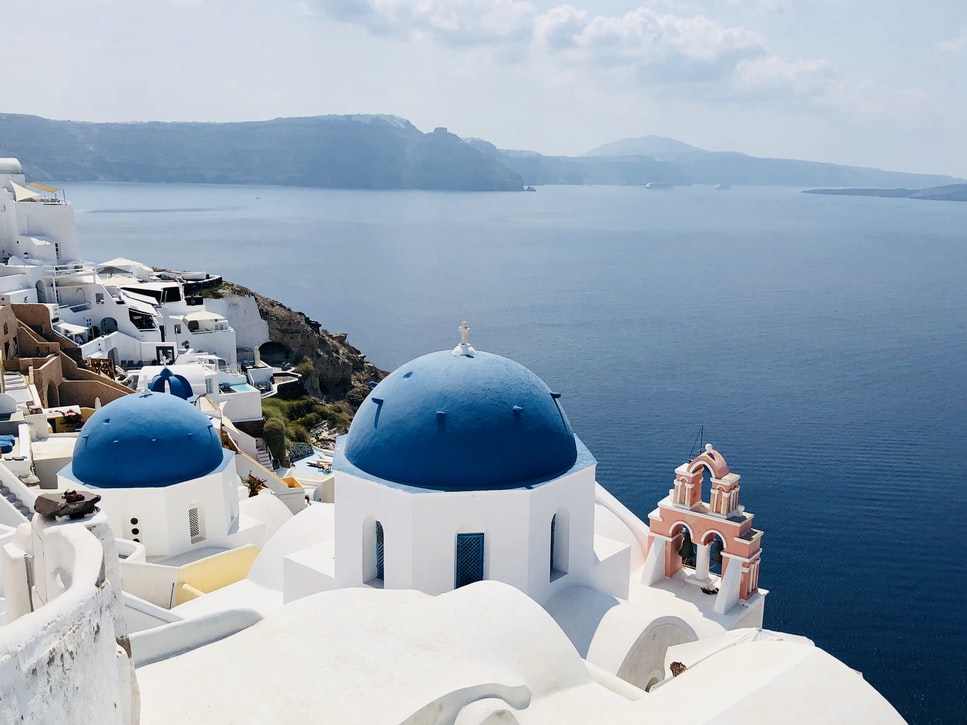
Take a dip in the turquoise waters, walk around the beautiful villages and dine in the fine restaurants, Santorini will steal your heart. This is still easily one of our favourite places in Greece.
2. Mykonos
Mykonos is a Greek island, part of the Cyclades, lying between Tinos, Syros, Paros and Naxos. The island has an area of 85.5 square kilometres (33.0 sq mi) and rises to an elevation of 341 metres (1,119 feet) at its highest point. There are 10,134 inhabitants according to the 2011 census, most of whom live in the largest town, Mykonos, which lies on the west coast. The town is also known as Chora (i.e. the Town in Greek, following the common practice in Greece when the name of the island itself is the same as the name of the principal town).
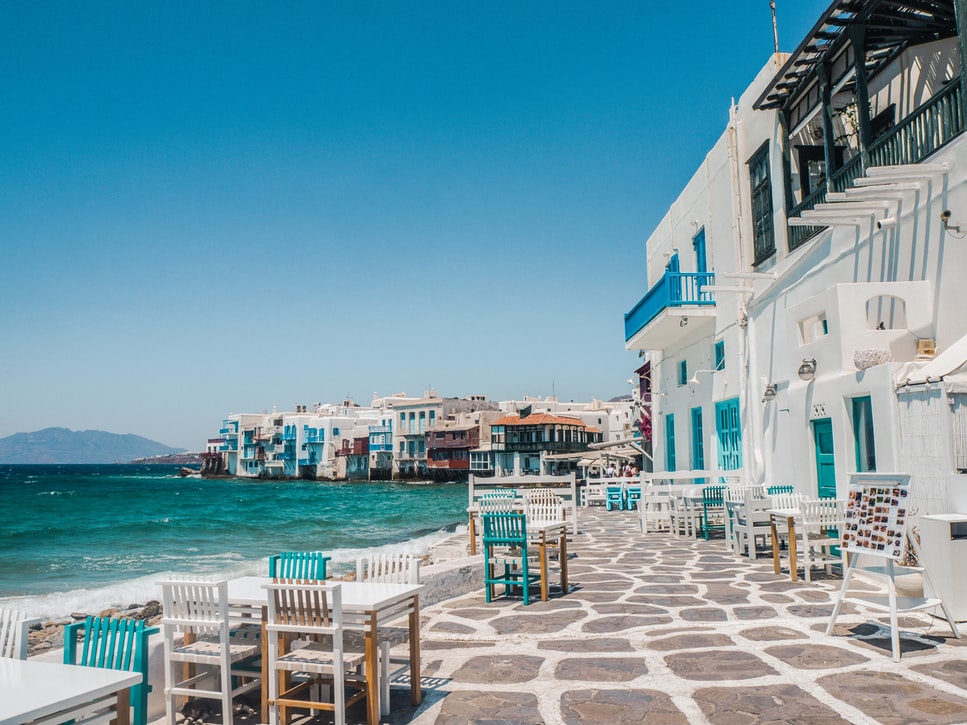
Mykonos needs no introduction for its exciting nightlife and the crazy parties, with its world-famous clubs and atmospheric bars. This is one of the best-developed islands in Greece and receives a huge number of tourists every year. Often compared to Ibiza, Mykonos has the best party scene in the Greek islands with countless bars and clubs, known for their trendy decoration and the great music. Most night bars and clubs are concentrated in Chora and stay open till early in the morning. As Mykonos is a popular gay destination, many bars are only gay venues and organize drag queen parties.
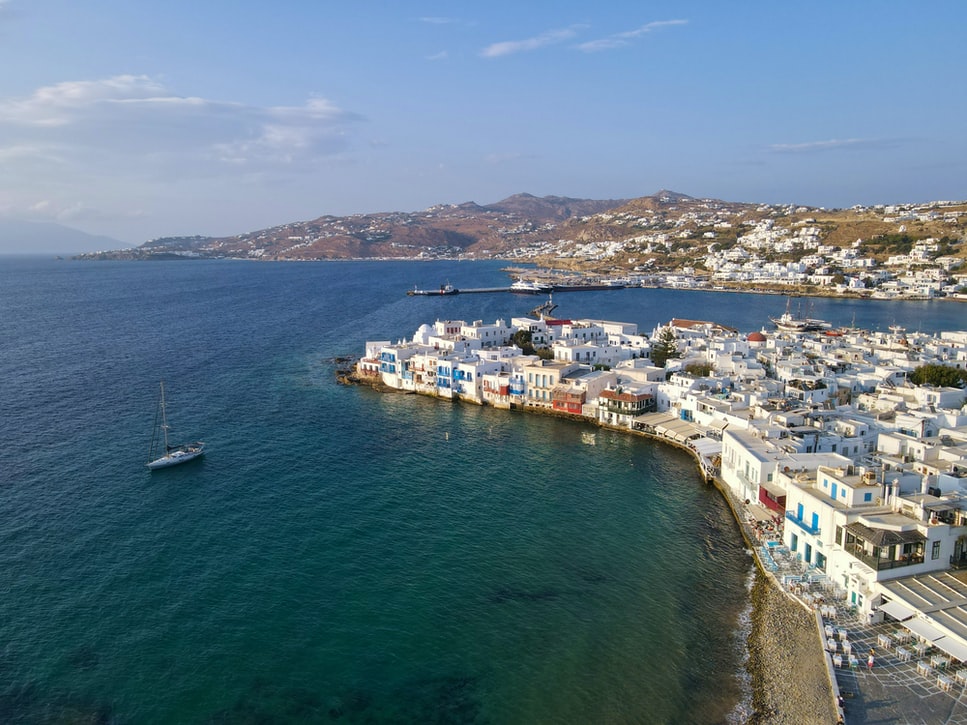
Mykonos has a hot semi arid climate because of the low overall rainfall, although it has lots of Mediterranean characteristics and it is highly influenced by the Mediterranean Sea. The sun shines for up to 300 days a year. The rainy season lasts from October until March. Vegetation follows the typical pattern for the region and grows around mid-autumn and ends in the beginning of the summer. The average daily temperature in the Winter is around 15°C, while it is 27 in the summer. The average night temperature is 11°C in the winter and 23°C in the summer.
3. Delphi
Second to the Acropolis in Athens, Delphi is Greece’s most popular archaeological site. Located about two and half hours from Athens along the slopes of the awe-inspiring Mount Parnassus, Delphi was once revered by the ancient Greeks as the center of the earth. Dedicated to the god, Apollo, Delphi was an important oracle.
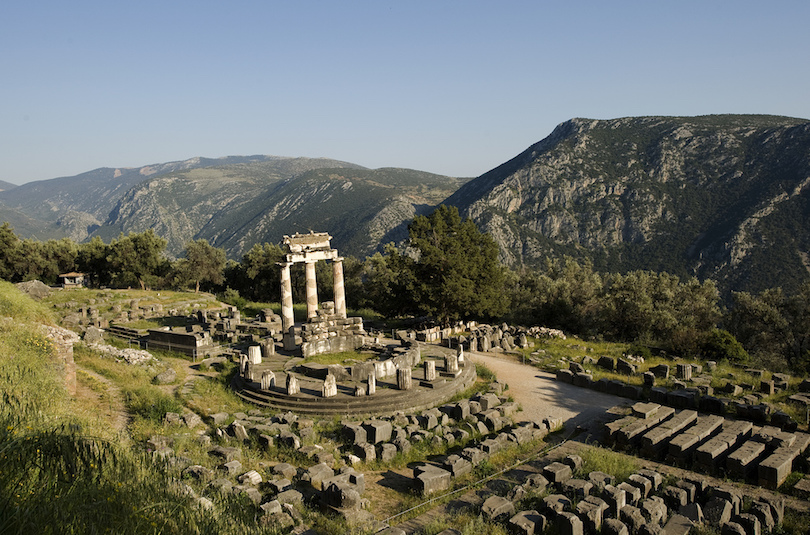
In ancient times, people would come to this sacred spot to inquire of the priestess for advice on a wide range of topics from farming to relationships and politics. Significant ruins and structures at Delphi include the Temple of Apollo, the Athenian Treasury, the theater and hippodrome that once hosted events of the ancient Pythian Games.
4. Crete
The largest of the Greek islands, Crete is a spacious land of pleasing contrasts where landscapes range from stunning coastline to rugged mountains and rolling countryside dotted with olive trees.
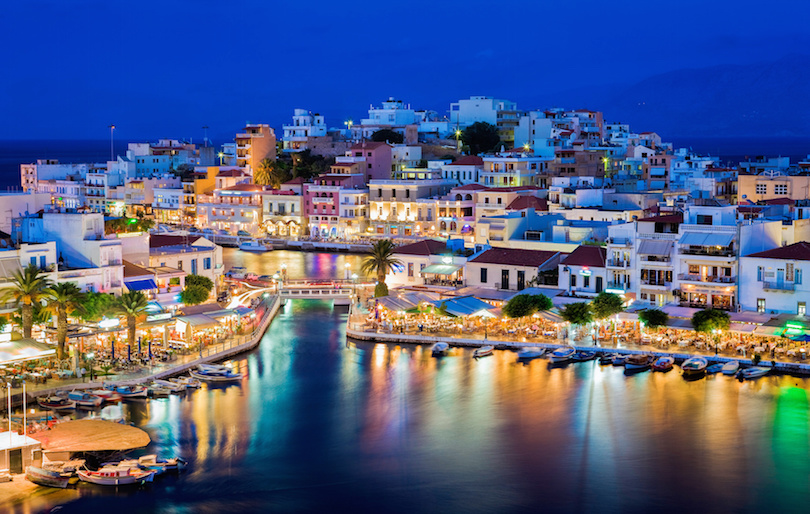
Bustling metropolitan cities spread beyond to quiet villages centered around outdoor coffee shops. Steeped in history, Crete still bears archaeological traces of the many civilizations that inhabited it down through the centuries.
5. Athens
Inhabited for more than 3,000 years, Athens is widely known as the cradle of Western civilisation and the birthplace of democracy. The city presents a confusing blend of historical and modern features. Athens is famous for its archaeological ruins and monuments such as the famous Acropolis, the Parthenon, the Ancient Agora and the Theatre of Dionysos just to name a few. Athens dominates the Attica region and is one of the world’s oldest cities, with its earliest human presence started somewhere between the 11th and 7th millennium BC.
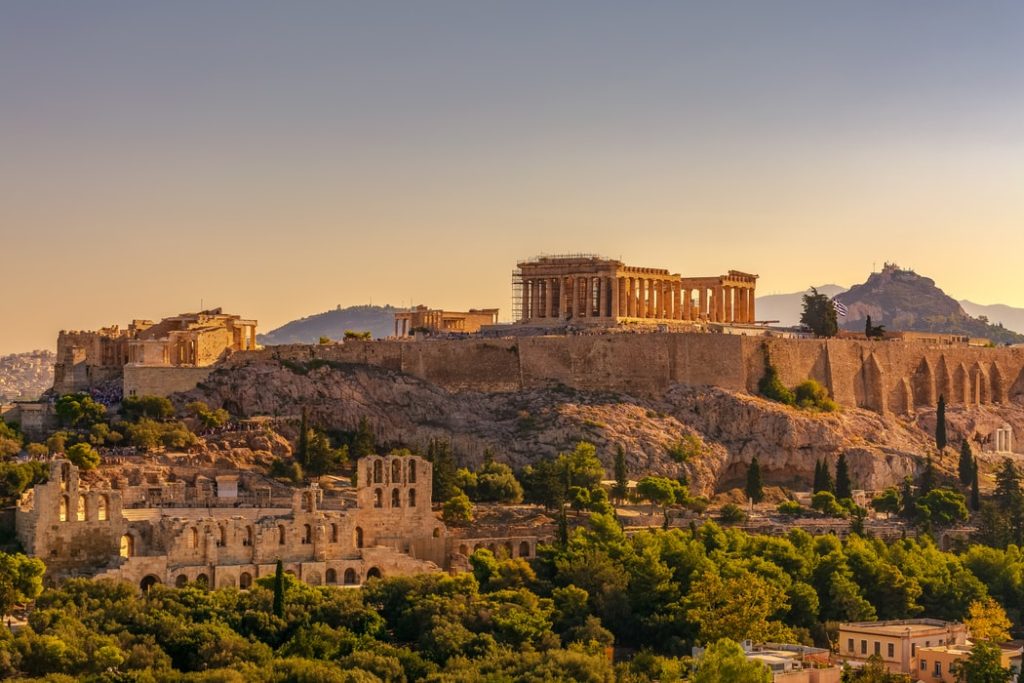
Classical Athens was a powerful city-state. It was a center for the arts, learning and philosophy, and the home of Plato’s Academy and Aristotle’s Lyceum.[7][8] It is widely referred to as the cradle of Western civilization and the birthplace of democracy,[9][10] largely because of its cultural and political impact on the European continent—particularly Ancient Rome.[11] In modern times, Athens is a large cosmopolitan metropolis and central to economic, financial, industrial, maritime, political and cultural life in Greece. In 2021, Athens’ urban area hosted more than three and a half million people, which is around 35% of the entire population of Greece.
However, Athens is not just about ancient ruins. This bustling city is also an important center for business, culture and nightlife.
